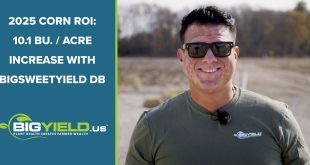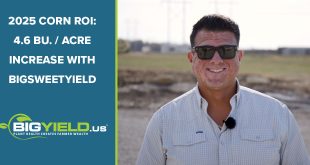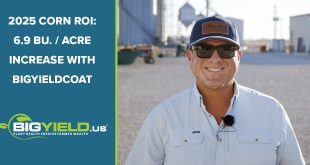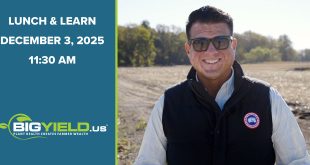Tony Reinsch Discusses the pros and cons of different tillage strategies.
Video Transcript
Pros and cons of tillage? Conventional till – back in the 40’s, 50’s, 60’s, and 70’s we had the plow. Then we had the disc and the field cultivator. We had the privilege of watching dirt fly around all over the place during the winter when there was nothing left in the field.
I love conventional till for several aspects. When you are bringing grass or pasture out of being sat aside and bringing it into production, conventional till is about the only way you can do it. On conventional – back to a comment I made earlier about iron – there is no weed resistant to iron. As long as you have a good disc or a good field cultivator, not too many weeds are resistant to iron.
Other than that, that is where I draw the line on conventional tillage because a lot of places – I believe we are stewards of the ground. We have got to be careful or we won’t have any top soil left. We need to be careful on that.
Because of that I am a reduced tillage or a no-till type. With conentional, you are using a lot of iron to get rid of your weeds and level your soil and prepare the seed bed. If you go to the other end of the spectrum with no-till, you’re relying on chemicals to get rid of your weeds. And again, back to resistance, can we keep fighting the battle with resistant weeds and keep going no-till?
I like no-till for the nutrients. It keeps a lot of your stalks, a lot of your leaves, and a lot of your ruffage on the ground after harvest. Therefore, when that stuff breaks down, the nutrients are building a seed bed and your organic matter goes up. But there again, with conventional you have good weed control with the iron. With no-till, you have no weed control with any iron. So those are the different apects, the different ends of the gammut if you will.
On reduced tillage, I see a lot of farmers doing reduced tillage. They are also seeding cover crops in the fall. I also see a lot more conventional farmers seeding cover crops in the fall. Everybody is starting to realize that we only have this soil and if we want to pass it on to our kids and grandkids, we need this soil. I’m glad to see that in all areas.
We can also look at strip-till. Some of the benefits of strip-till are you’re putting all of your nutrients, your starters, your nitrogen right there about eight inches below and when you come in with a planter you can put another shot of starter right in the furrow.
With strip-till, I see this – it’s not going to be a tillage practice everywhere. Especially if you have a lot of rain or a lot of hills. In hilly areas I see no-till being the number one tillage practice out there, just to help with any kind of water runoff with these heavy rains.
I see strip-till growing every year. However, it takes a lot of management practice. It’s a great tool and a great opportunity, but whoever is switching from regular tillage to strip-till needs to do there homework and understand the entire process of strip-till. But I’ll tell you what, it’s growing and I see it being one of the highest growth in tillage strategies in the next ten years of agriculture.
 BigYield High Yield Soybeans, High Yield Corn, and High Yield Wheat
BigYield High Yield Soybeans, High Yield Corn, and High Yield Wheat



